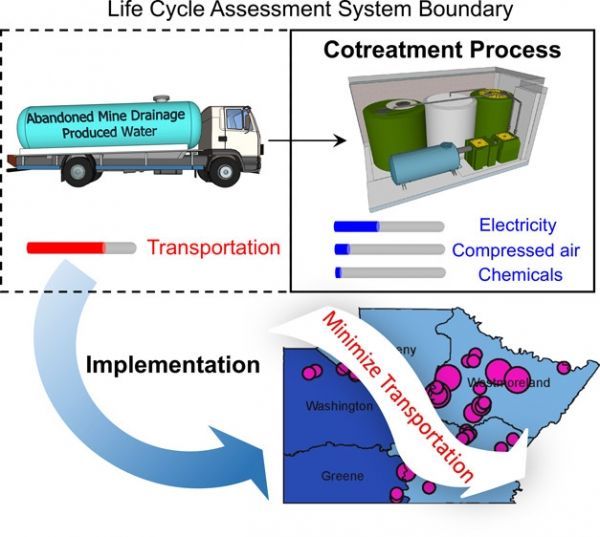Pennsylvania’s energy history is rich with the quantities of fossil fuels that it has produced, but is also rife with the environmental legacies of coal mining and, more recently, hydrofracturing. Water that finds its way into abandoned coal mines dotted throughout the Commonwealth resurfaces as acid mine drainage (AMD), while freshwater used to fracture or “frack” oil and natural gas deposits reemerges as “produced” water contaminated with salts, metals, and radioactive material.
Remediating both AMD and produced water is an expensive process and federal law prohibits produced water disposal at municipal water treatment plants. However, research from the University of Pittsburgh Swanson School of Engineering, published recently in Environmental Science & Technology, found that co-treatment of the two fluids may not only solve two environmental issues at once, but also reduce the environmental impact of both legacy wastes.
Leanne Gilbertson, assistant professor of civil and environmental engineering, is principal investigator of the research, “Life Cycle Impact and Benefit Tradeoffs of a Produced Water and Abandoned Mine Drainage Co-Treatment Process” (DOI: 10.1021/acs.est.8b03773). The article, authored by graduate student Yan Wang, incorporates related research by her Swanson School colleagues, Radisav Vidic, the William Kepler Whiteford Professor and Department Chair of Civil and Environmental Engineering, and Associate Professor Vikas Khanna.
“This study is the serendipitous result of three different researchers finding a common theme to unite the collaboration. Radisav’s group developed the method for co-treating AMD and produced water and he is a leading researcher in the field of produced water treatment via membrane distillation, while Vikas’s group focuses on complex systems analysis,” Dr. Gilbertson explained. “My expertise in life cycle assessment brings a new perspective to these industries and a way to quantify the environmental and human health impact tradeoffs of alternative approaches to utilizing these two wastewaters.”
Continue reading at University of Pittsburgh
Image via University of Pittsburgh


